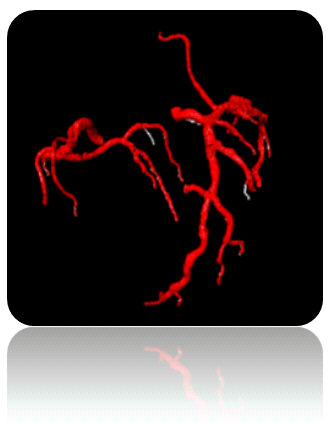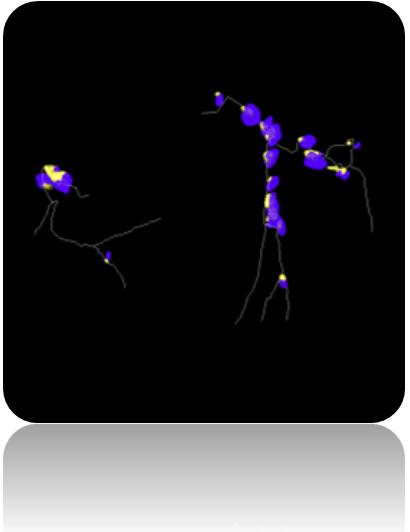Welcome on the research page of Dr. Stefan Saur. From October 2005 to October 2009, I have been with the Institute of Computer Vision at the ETH Zurich to do my Ph.D. studies in the field of medical image processing.
My research focused on the assessment of atherosclerosis in coronary arteries - a project from the National Center of Competence in Research Co-Me.
As imaging modality, Computed Tomography examinations have been used. Various aspects for the assessment of atherosclerosis have been researched during this project which are presented on this webpage.
Calcium scoring. For a first risk assessment for cardiovascular diseases, calcium scoring is performed. However, the nowadays used calcium scores show a high variability in their application. We have therefore developed an algorithm called ACCURATUM that is more robust as compared to the currently available scores.
Anatomical structures. In medical image processing, it is essential to first locate the anatomies of interest. We have therefore developed algorithms for the automatic detection of the aorta, the tracking of the coronary artery tree, its segmentation as well as its automatic labeling.
Plaque detection. A framework for the automatic detection of calcified plaques has been proposed. The novelty of our framework was to include both the nonenhanced and the contrast enhanced CT examinations for plaque detection. This was achieved by first extracting candidates in both examinations and by afterwards registering them.
Dual energy CT. We researched the recently introduced dual energy CT technology for its suitability to improve plaque detection. With a tissue cancelation algorithm, we could show a contrast enhancement between all targeted tissues (lumen, adipose, calcium, soft tissue) for plaque assessment.
Plaque distribution patterns. We have researched spatial plaque distribution patterns within the coronary artery tree. We used the frequent itemset mining technique for the analysis and could extract interesting patterns. Furthermore, we used the extracted distribution patterns to develop a guided review of segments in which our algorithm proposes segments with potientially missed plaques to a reader. Doing so, we could show a significant improvement for manual plaque detection.


